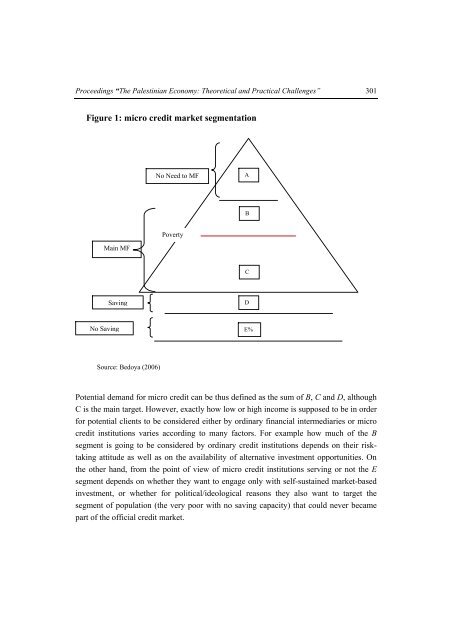The Palestinian Economy. Theoretical and Practical Challenges
The Palestinian Economy. Theoretical and Practical Challenges
The Palestinian Economy. Theoretical and Practical Challenges
Create successful ePaper yourself
Turn your PDF publications into a flip-book with our unique Google optimized e-Paper software.
Proceedings “<strong>The</strong> <strong>Palestinian</strong> <strong>Economy</strong>: <strong>The</strong>oretical <strong>and</strong> <strong>Practical</strong> <strong>Challenges</strong>” 301<br />
Figure 1: micro credit market segmentation<br />
No Need to MF<br />
A<br />
B<br />
Poverty<br />
Main MF<br />
C<br />
Saving<br />
D<br />
No Saving E%<br />
Source: Bedoya (2006)<br />
Potential dem<strong>and</strong> for micro credit can be thus defined as the sum of B, C <strong>and</strong> D, although<br />
C is the main target. However, exactly how low or high income is supposed to be in order<br />
for potential clients to be considered either by ordinary financial intermediaries or micro<br />
credit institutions varies according to many factors. For example how much of the B<br />
segment is going to be considered by ordinary credit institutions depends on their risktaking<br />
attitude as well as on the availability of alternative investment opportunities. On<br />
the other h<strong>and</strong>, from the point of view of micro credit institutions serving or not the E<br />
segment depends on whether they want to engage only with self-sustained market-based<br />
investment, or whether for political/ideological reasons they also want to target the<br />
segment of population (the very poor with no saving capacity) that could never became<br />
part of the official credit market.
















